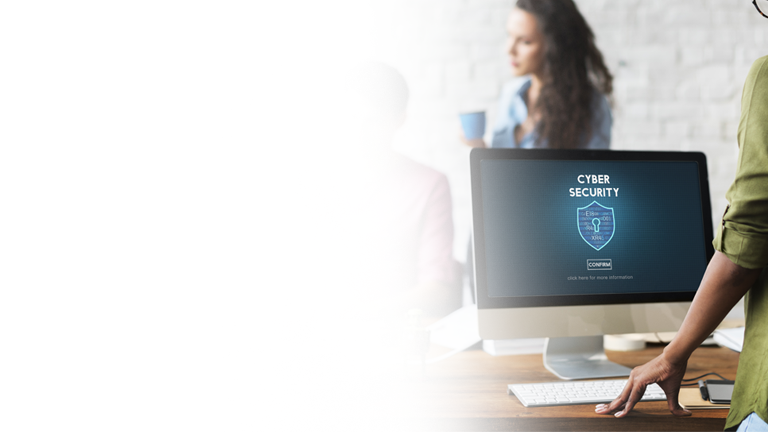Protecting Your Company from Check Fraud
Today, fraud should be the concern of every business. Companies need to take every precaution to avoid check fraud loss. We will assist you with your internal procedures to reduce the risk as much as possible.
Your business needs to be aware of the increase in altered and counterfeit checks. With the continued rise in fraudulent activity, compounded by technological advances in color copying and desktop publishing, it makes good business sense to evaluate your company’s security measures.
Security Features
Your company can reduce potential fraud through these daily business practices:
- Notify us immediately if checks are lost or stolen or if fraud is suspected
- Balance your account statements immediately
- Treat checks and deposit slips like cash, limiting employee access to any supplies
- Destroy obsolete check stock and deposit slips – old documents should be completely destroyed by shredding or other secure methods
- Store canceled checks and bank documents in a secure location or use check safekeeping services
- Order smaller quantities of checks – we suggest less than a six-month supply
- Reduce mail fraud by arranging to pick up check reorders at the bank or having them delivered to a post office box
- Print checks in dual custody
- Watch high-volume, low-dollar accounts closely
- Rotate personnel and enforce mandatory vacations in key positions
- Separate the account reconciliation function from the check issuance function
- Include background checks in hiring procedures for new employees
- Conduct surprise internal audits
- Network with other business professionals regarding fraud-prevention strategies
- Ask about our fraud reduction services, including Balance Reporting and Online Cash Management
- Select a check design that discourages tampering – our check vendor has a special line of checks with characteristics that make alteration and reproduction more difficult:
- Chemically sensitive paper that reacts to common solvents used to alter information
- Watermark paper
- Intricate and prismatic backgrounds that are difficult to reproduce
- MicroPrint signature line
- Warning bank listing the check’s security features
- Secure product packaging with a tamper-evident seal
Protecting Your Company from Electronic Fraud
Best Practice Recommendations:
While we employ the latest in hardware and software technology to protect you and your privacy, user awareness is critical for your protection. The more often you look at your accounts, the better, since you can recognize legitimate transactions versus something unusual.
To better protect your funds, here are some “Best Practice Recommendations” for Cash Management & Remote Deposit operations at your site.
- At the beginning of each work day, log onto your system and review all accounts for the validity of every transaction posted over night. This should be done by more than one person.
- Use dual controls; the same person should not build and send files. Use a second path for confirmation of file receipt.
- Use workstations dedicated to Cash Management or Remote Deposit. Do not use these workstations for web browsing or email. Limit administrative rights on users’ work stations to prevent unknown downloading of malware.
- Ensure that workstations have the most current browser software and up-to-date virus, adware, spyware and firewall protection.
- Always secure devices that generate secure access codes for online access.
- User sign on credentials should never be shared with others, including employees or IT Support Staff.
- Review User Access rights on a regular basis. Notify the bank immediately if a user’s access should be changed or discontinued due to a change in work responsibilities.
- Use strong passwords that have the following characteristics:
- Contain both upper and lower case characters (e.g., a-z, A-Z)
- Have digits and punctuation characters as well as letters (e.g., 0-9, ! @ $ - _ / . , : = *)
- Be at least 8 characters long
- Are not based on personal information, names of family, etc.
- Passwords should never be written down or stored on-line. Try to create passwords that can be easily remembered. One way to do this is to create a password based on a song title, affirmation, or other phrase. (For example, the phrase might be: “This May Be One Way To Remember” and the password could be: “TmB1w2R!” or “Tmb1W>r~” or some other variation. NOTE: Do not use either of these examples as passwords!)
- Never leave your computer unattended while you are logged in to the Online Cash Management website. If you are interrupted please log off first.
- At the end of each work day – log onto your system and check for any unauthorized activity by viewing the activity log. Have at least two people sign off on this activity.
- Balance Bank Statements as soon as they are received.
- Remember that the Bank will never request that a customer divulge sensitive data via phone or email.
- Delete emails from unknown sources. Do not open links provided in unsolicited emails.
- If you sense a lag in the business financial banking site or you receive any messages out of the normal, notify the Bank immediately.
- Contact your business insurance provider and review your business insurance policy to determine if it provides necessary coverage for fraudulent activity.


